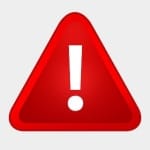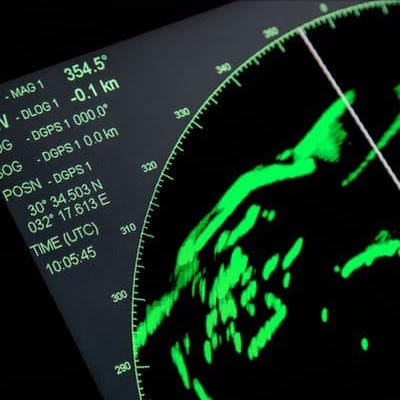Okay, so most of us know we need flares (visual distress signals or VDS) on board to both be safe and to satisfy the requirements of the law, but the whole flare thing can be a bit confusing. Let’s make our way through what’s needed and how these things perform.
Let’s kick things off with a short video to set the scene…
US Coast Guard Requirements
The official US Coast Guard edict is kind of wordy and text-booky. Like many written laws, it doesn’t quite roll off the tongue or sit in the ol’ brain box so comfortably.
“Recreational boats 16 feet and over used on coastal waters or the Great Lakes are required to carry a minimum of either 1) three day and three night pyrotechnic devices, 2) one day non-pyrotechnic device (flag) and one night non-pyrotechnic device (auto SOS light) or 3) a combination of 1) and 2). Recreational boats less than 16 feet on coastal waters or the Great Lakes need only carry night visual distress signals when operating from sunset to sunrise.”
The best way to understand is to see some examples of VDS combinations that meet the requirements for boats over 16-feet.

3 handheld red flares
(day and night)

3 hand held red flares (night)
1 hand held orange smoke flare (day)
2 floating orange smoke signals (day)

Orange Flag (day)
Electric Distress Light (night)
(non-pyrotechnic option)
There are exceptions, like a rowing shell for example, but most boats should have a supply of flares. So the most prudent thing to do is go get some flares (or an electronic handheld beacon) that will save your butt if things get dicey. And remember to regularly check the expiration dates and replace as necessary. The last thing you want to have happen is for you to have no working flares in an emergency situation.
Choosing the Right Visual Distress Signals
Many weekend boaters often have on board both some “alert” flares and some “locator” flares. “Alert” signals draw attention to your emergency and “Locate” handheld flares show rescuers where you are. There is a variety of signals to choose from when it comes to flares and it can be slightly confusing, but it’s not rocket science… or is it?

ORION Skyblazer Aerial Signals
Handheld Meteor Alert Flares
The alert flares sometimes come in a package of four (one more than the law requires) and have a little pull-tab that you yank on – a bright fireball shoots about 500-feet into the air and lasts about seven to eight seconds. Hopefully someone sees it and saves you. If not, you have three more chances! After the fourth lonely firing of an alert flare it is known that many troubled boaters ask themselves: “Why didn’t I get more than one package of those flares?”

Orion 12-Gauge Flare Launcher
12-Gauge Meteor Alert Flares
Rather than handheld launchers some boaters prefer the gun variety of shooting flares. This is essentially a plastic pistol that fires the flare about the same height as the aforementioned handheld (although performances may vary) but is more controllable and many feel more comfortable with this system. It’s very similar to firing a handgun – you load the shell, cock the pin and fire into the sky. These are also for day or night use with more effectiveness in the dark.

Orion Hand-held Red Signal Flare
Handheld Locator / Signal Flares
Locator flares (or signals) are similar in look and design to the handheld alert flare but they spit out a very bright glowing ball of light for a duration of one to three-minutes. The idea is to create a reference point for a solid period of time to facilitate rescue. They are effective both day and night, but more so during the night. The surface-to-surface sighting range on water is approximately three to five miles and experts say it is prudent to have at least 12 minutes (total burn time) of signals onboard to maintain a strong homing signal until help arrives. It’s important to hold these over the side of the boat on the leeward side because they drip hot goo that could make your situation worse!

Orion Hand-held Orange Smoke Flare
Day Signal Flares
In the flare world, the most common and effective day signal is a smoke flare. If you’re in trouble during the brightness of a sunny day, for sure, smoke flares are what you should use. They create a bloom of orange smoke, lasting about a minute, that is visible way far away and will make other nearby mariners say, “you see that crazy orange smoke over there?”

Orange Flag Day Signal
Other Day Signals
However, if you want to go old-school, you can carry an orange flag to be compliant. But let’s be real: If you’re at the point where you’re calling for help, reaching for an orange flag isn’t the most satisfying of feelings. When your crew says curiously, “Say, Jim? Do you have some flares around here? And you say, ‘no, but I have this awesome orange flag!‘” It’s not going to be well received.

SOLAS Grade Visual Distress Signals
SOLAS Grade Flares
The Coast Guard has minimum requirements for what a flare should be and that’s not based on a worse case scenario. If you’re the kind of sailor who goes far offshore or just likes to be as safe as can be, check out the SOLAS grade flares. Both alert and locator SOLAS flares burn brighter, last longer and are waterproof. Parachute Flares are within this designation – these babies will get you noticed! Also called signal rockets, they shoot an extremely bright meteor 1,000-feet into the air (in four-seconds) then a parachute pops out and descends for 40-seconds. There are also SOLAS grade smoke flares and they create a seriously large orange cloud.

Weems & Plath Electronic Flare
LED Electric Beacon
New to the flare scene is the Weems & Plath SOS Distress Light, which is the only LED Visual Distress Signal Device that meets U.S. Coast Guard requirements. The battery charged unit will flash the universal Morse code signal for SOS (· · · – – – · · ·) for 60-hours and is visible up to 10-miles away. It is waterproof and will float. Many find the most alluring element of the LED beacons is they never need replacing. Unlike ordinary pyrotechnic flares that need to be replaced every 42-months, the beacons never expire.
 Remember to regularly check the expiration dates on your flares and replace as necessary. The last thing you want to have happen is for you to have no working flares in an emergency situation.
Remember to regularly check the expiration dates on your flares and replace as necessary. The last thing you want to have happen is for you to have no working flares in an emergency situation.













